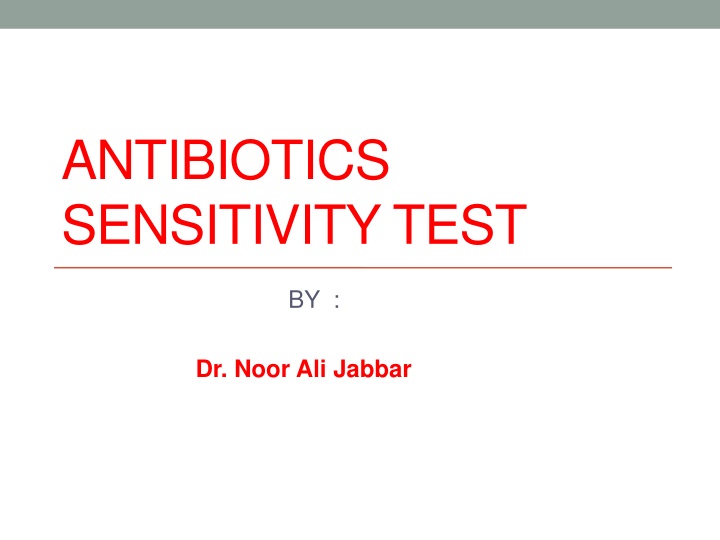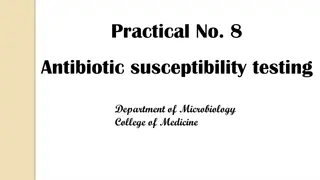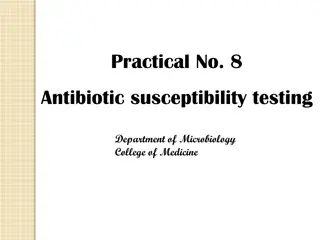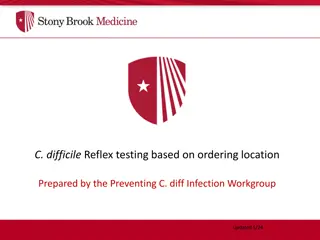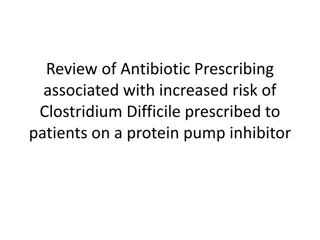Importance of Antibiotic Sensitivity Testing in Infection Treatment
Antibiotic sensitivity testing is crucial for identifying the most effective antibiotic treatment for bacterial infections. It helps determine the susceptibility of bacteria to antibiotics, guiding clinicians in administering targeted therapy for better outcomes in cases where standard treatments fail or resistance is present. Various testing methods, such as diffusion and dilution, aid in assessing bacterial response to antibiotic agents accurately.
Download Presentation

Please find below an Image/Link to download the presentation.
The content on the website is provided AS IS for your information and personal use only. It may not be sold, licensed, or shared on other websites without obtaining consent from the author.If you encounter any issues during the download, it is possible that the publisher has removed the file from their server.
You are allowed to download the files provided on this website for personal or commercial use, subject to the condition that they are used lawfully. All files are the property of their respective owners.
The content on the website is provided AS IS for your information and personal use only. It may not be sold, licensed, or shared on other websites without obtaining consent from the author.
E N D
Presentation Transcript
ANTIBIOTICS SENSITIVITY TEST BY : Dr. Noor Ali Jabbar
Antibiotic sensitivity testing or antibiotic susceptibility testing ; is the measurement of the susceptibility of bacteria to antibiotics. It is used because bacteria may have resistance to some antibiotics. Sensitivity testing results can allow a clinician to change the choice of antibiotics from empiric therapy, which is when an antibiotic is selected based on clinical suspicion about the site of an infection and common causative bacteria, to directed therapy, in which the choice of antibiotic is based on knowledge of the organism and its sensitivities
Why do I need an antibiotic sensitivity test? You may need this test if you have an infection that has been shown to have antibiotic resistance or is otherwise hard to treat. These include tuberculosis, MRSA, and C. diff . You may also need this test if you have a bacterial or fungal infection that is not responding to standard treatments.
Testing for antibiotic sensitivity 1- Diffusion methods 2- Dilution methods for minimum inhibitory concentration determination ( MIC )
Example Bacteria are streaked on dishes with white disks, with a different antibiotic. Clear rings, such as those on the left, show that bacteria have not grown indicating that these bacteria are not resistant. The bacteria on the right are fully resistant to all but two of the seven antibiotics are sensitive
